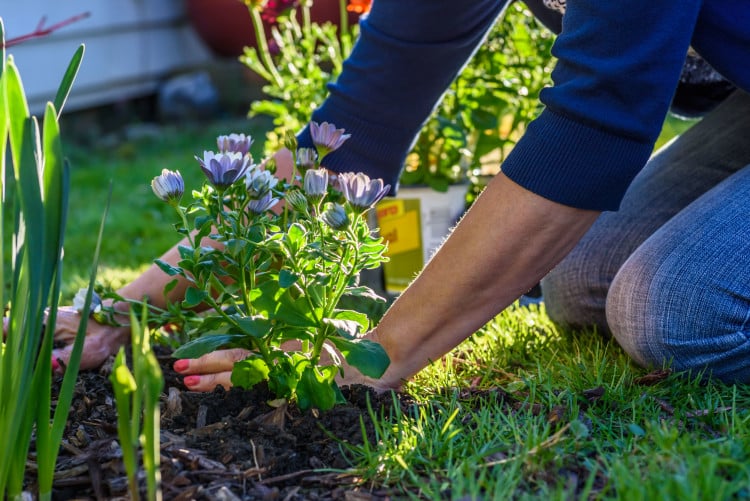Summer is drawing to a close in September, but you can still get outside to catch the last of the summer sunshine, create some additional plants for free and prepare your garden with bulbs to ensure a spectacular spring colour display.
Dividing perennials

Summer-flowering herbaceous perennials can be lifted and divided in September when they’ve finished flowering and the soil is still warm enough to aid new root development.
Facts
In fact, most perennials need to be divided every two to three years, otherwise they get too big for the space they’re in and become congested – it will also increase plant stock for free!
Gently dig out the plant with a fork so as to not sever plant roots. Once the plant is out, divide it in a way suitable to its type.

Small fibrous-rooted plants like Hostas, can be gently teased into two with your fingers.
Size
Larger fibrous-rooted varieties, such as hardy Pelargonium (Geranium), are best levered apart using two garden forks thrust back to back into the plant’s centre.
This will separate the plant into two with minimal root damage.
If the plant you’re dividing is especially big, you will need a good strong fork to get good leverage.
Once the plant has been divided, replant the newly-divided specimens in your chosen spots and water frequently. They should have enough time to set root before falling dormant over winter ready for next spring.
Planting bulbs

September is the perfect time to be planting hardy spring-flowering bulbs such as Narcissus (daffodil), Hyacinth and Crocus. These bulbs will do best in a warm, sunny spot and they all love good drainage.
Bed or Border
If you’re planting them in a bed or border, dig a hole about four times the depth of the bulb. Put a layer of sand and grit in the bottom of the hole to aid drainage.
Cover this with a little compost, then plant the bulbs under about 2-bulb’s worth of depth of soil.
Try bunching six to ten bulbs together in one spot, placed one bulb’s width apart, or line a path them for an impressive display.
Taking cuttings
Tender perennials like Fuchsia, Petunia, Salvia (Sage), Verbena (Vervain), Penstemon and Chrysanthemum can all be propagated with cuttings.
Low cost
This is a brilliant way to grow more plants for nothing. And there’s something satisfying about nursing plants through from tender young shoots to fully-fledged plants for use in your own containers.
You’ll need to find strong, young growth that hasn’t flowered this year. Snip it off using pruning snips at an angle just beneath a leaf joint, leaving a stem of 5-10cms in length.


Next, strip off the leaves from the lower stem, leaving just one or two pairs towards the top. This will help to prevent the plant from losing too much water via its leaves while it has no roots to take moisture up from the soil.
Rooting Powder
Dip the end of the cutting in hormone rooting powder and plant in compost mixed with a little horticultural grit for drainage. This will help to prevent the end from rotting and promote good root growth.
Put the plants in a propagator and cover them with a plastic bag to help retain moisture.
Place the cuttings somewhere bright and warm, but keep them out of direct sunlight until roots have formed (about six to ten weeks).
It’s a good idea to mist plants daily to ensure their water needs are met while they are still rootless.

Love the detailed tips on perennials.did not know a,bout the number of varieties you could propagate.going to be busy.also planting bulbs so early,usually plant these in October.thank you for details.
I’m so useless at looking after my garden. Thank you for the tips .
So helpful! Everything you need as a beginner or if you need a reminder, I certainly did as I want to propagate a fuchsia so now I can get cracking. Thank you David.
Love the ideas and level of depth on information, always learning something new.
Need to get a list of plants I can put in a full sun bed
Great blog on jobs to do each month of the year, with easy instructions for the novice gardener.
Many thanks for your advice,i have M.S.& gardening can be diffucult.Will take your tips on board.Wendy